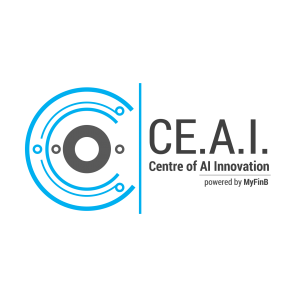“I predict that, because of artificial intelligence and its ability to automate certain tasks, .not only will we have a much wealthier civilisation, but the quality of work will go up . and a higher fraction of people will have callings and careers ..” – Jeff Bezos, founder of Amazon.
Enter the Robots: What is RPA?
While the common view holds automation responsible for replacing people with machines, the business view is unequivocally positive – automation cuts costs and boosts productivity. Bezos’ quote resolves both strands of thought. And his company, a poster boy for automation today, provides perhaps its most visible effect; Amazon began as an online bookstore with employees manually recommending books.
Robotic Process Automation (RPA) is at the forefront of business process automation today. RPA is the use of technology to execute routine, repetitive and rules-based tasks through ‘bots’ built into the software, largely using artificial intelligence/machine learning.
These bots work similar to humans – only faster and more accurately. They can be run during non-business hours are easy to use, lower cost, and programmable without coding expertise. RPA cost reduction is around 40 to 50 per cent versus full-time employees and 15 to 20 per cent versus offshore outsourcing.
RPA is being deployed across business functions, mostly in sectors with both high digitisation and transaction volumes such as retail, telecom, banking, etc. Gartner says that worldwide RPA software revenue will reach nearly $2 billion in 2021, a 30 per cent increase since 2018. It expects 90 per cent of large organisations to adopt some form of RPA by 2024.
Of bots and bottom lines
Finance and accounting (F&A) comprise mundane tasks highly suited for automation. Gartner cites that 89 per cent of general accounting operations and 72 per cent of financial controlling and reporting are automatable. The following is a list of RPA-fit areas within the F&A function:
– Standardised journal entry processing
– Data entry and payment preparation
– Validation analytics, allocation, and posting to ERP systems
– Reconciliations
– Financial planning and analysis
– Financial and external reporting
– Cash management
– Operational F&A
RPA frees up employees’ time for higher-value work, from strategic decision support to advanced analytics. Companies that have successfully implemented RPA in their F&A departments have seen higher financial profits. It’s no wonder that Accenture’s Finance 2020 Report estimates that automation will eliminate up to 40 per cent of organisations’ transactional accounting work.
Machine + Man
Implementing RPA can be done either for one-time, as-is processes or as part of new end-to-end process automation. It is compatible with existing software systems, which, along with the fact that they are bought ‘per task’, keeps outlays low and without lock-ins.
That said, effective deployment requires a well-thought-through approach. Processes must first be thoroughly analysed for needs and gaps. The next step is to measure the time and cost savings that RPA would deliver. Finally, the operating model must be identified based on both organisational needs and constraints, and tool and vendor evaluation. The manpower freed up by RPA should be deployed profitably for both the organisation and employee. More fulfilling, higher-value work heightens employees’ job satisfaction and productivity and boosts employee value. Automation may reshape the finance department itself with new skillsets and employee profiles.
Finance leadership with RPA
RPA implementation leads to better customer experience and growth in employee value.
But automation in F&A is also about the function evolving with the times and moving to a more strategic role in the organisation with the intellectual capital unlocked by technology. Ultimately, it is about agile finance at the heart of what the modern organisation aims to be: a socially responsible entity with a ‘calling’ to build a ‘wealthier civilisation’, to use Bezos’ words.
Welcome to this brave new world.
SOURCE: Khaleej Times


